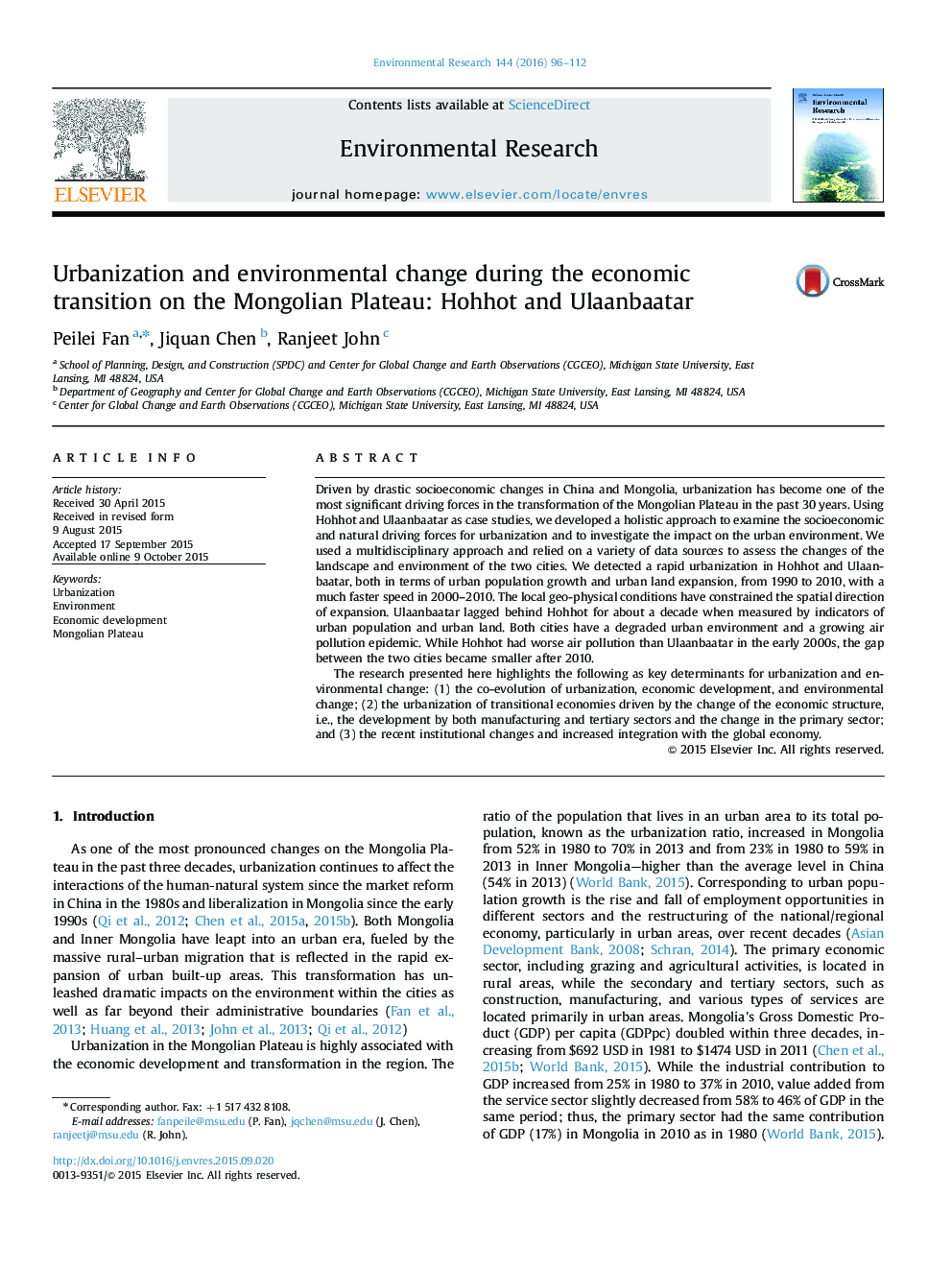| Article ID | Journal | Published Year | Pages | File Type |
|---|---|---|---|---|
| 4469648 | Environmental Research | 2016 | 17 Pages |
•We compared urbanization and environment change of Hohhot and Ulaanbaatar.•Both had fast growth in population and land but Hohhot was ahead of Ulaanbaatar.•Both did not improve their air quality but the gap between the two gets smaller.•The impact of economic development on urbanization decreases as economy develops.•Globalization and institutional factors are also key determinants of urbanization.
Driven by drastic socioeconomic changes in China and Mongolia, urbanization has become one of the most significant driving forces in the transformation of the Mongolian Plateau in the past 30 years. Using Hohhot and Ulaanbaatar as case studies, we developed a holistic approach to examine the socioeconomic and natural driving forces for urbanization and to investigate the impact on the urban environment. We used a multidisciplinary approach and relied on a variety of data sources to assess the changes of the landscape and environment of the two cities. We detected a rapid urbanization in Hohhot and Ulaanbaatar, both in terms of urban population growth and urban land expansion, from 1990 to 2010, with a much faster speed in 2000–2010. The local geo-physical conditions have constrained the spatial direction of expansion. Ulaanbaatar lagged behind Hohhot for about a decade when measured by indicators of urban population and urban land. Both cities have a degraded urban environment and a growing air pollution epidemic. While Hohhot had worse air pollution than Ulaanbaatar in the early 2000s, the gap between the two cities became smaller after 2010.The research presented here highlights the following as key determinants for urbanization and environmental change: (1) the co-evolution of urbanization, economic development, and environmental change; (2) the urbanization of transitional economies driven by the change of the economic structure, i.e., the development by both manufacturing and tertiary sectors and the change in the primary sector; and (3) the recent institutional changes and increased integration with the global economy.
